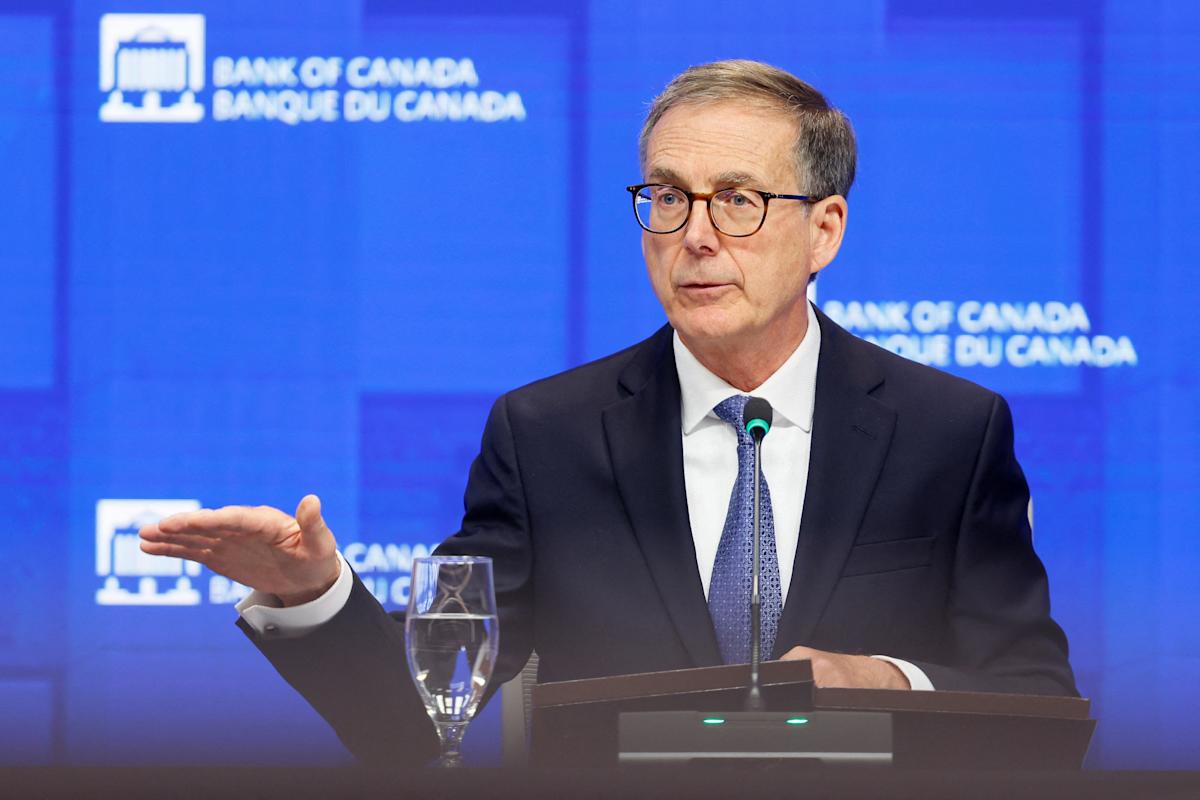Market odds for a cut from the Bank of Canada reached 82 per cent on Monday REUTERS/Blair Gable · REUTERS / Reuters
The Bank of Canada (BoC) reduced its benchmark interest rate by 25 basis points on Wednesday, a move largely expected as signs of economic weakness overshadowed recent positive employment data and a rise in inflation.
The BoC says the impacts of U.S. tariffs are “more evident” even as the situation remains uncertain, and that the trade conflict “is fundamentally reshaping Canada’s economy.”
Should inflation and the economy follow its forecasts, the BoC’s release about the decision says, “Governing Council sees the current policy rate at about the right level to keep inflation close to two per cent while helping the economy through this period of structural adjustment.”
The decision came despite inflation data last week showing a 0.5-percentage-point jump in September from the month before, and a surprise gain of 60,400 jobs in September.
The BoC also delivered its quarterly Monetary Policy Report, which returns to a single base-case economic forecast. Inflation is expected to hold at around 2 per cent, while GDP growth is projected to gradually increase over the rest of this year and average 1.4 per cent.
“However, U.S. tariffs are anticipated to permanently reduce the level of Canadian GDP” versus previous forecasts from January, the report notes.
In September, the BoC cut its overnight rate by 25 basis points, the first cut since March, noting the weak job market and few signs of inflation accelerating.
Watch the press conference with Governor Tiff Macklem and Senior Deputy Governor Carolyn Rogers, beginning at 10:30 a.m. ET.
Follow Yahoo Finance Canada’s live blog for news, updates and analysis of the Bank of Canada’s interest rate announcement below.
LIVE 29 updates
The Bank said in its release, “while the global economy has been resilient to the historic rise in US tariffs, the impact is becoming more evident.”
“The Canadian economy faces a difficult transition. The structural damage caused by the trade conflict reduces the capacity of the economy and adds costs. This limits the role that monetary policy can play to boost demand while maintaining low inflation.”
From the Bank’s release: “With ongoing weakness in the economy and inflation expected to remain close to the 2% target, Governing Council decided to cut the policy rate by 25 basis points. If inflation and economic activity evolve broadly in line with the October projection, Governing Council sees the current policy rate at about the right level to keep inflation close to 2% while helping the economy through this period of structural adjustment. If the outlook changes, we are prepared to respond. Governing Council will be assessing incoming data carefully relative to the Bank’s forecast.”


